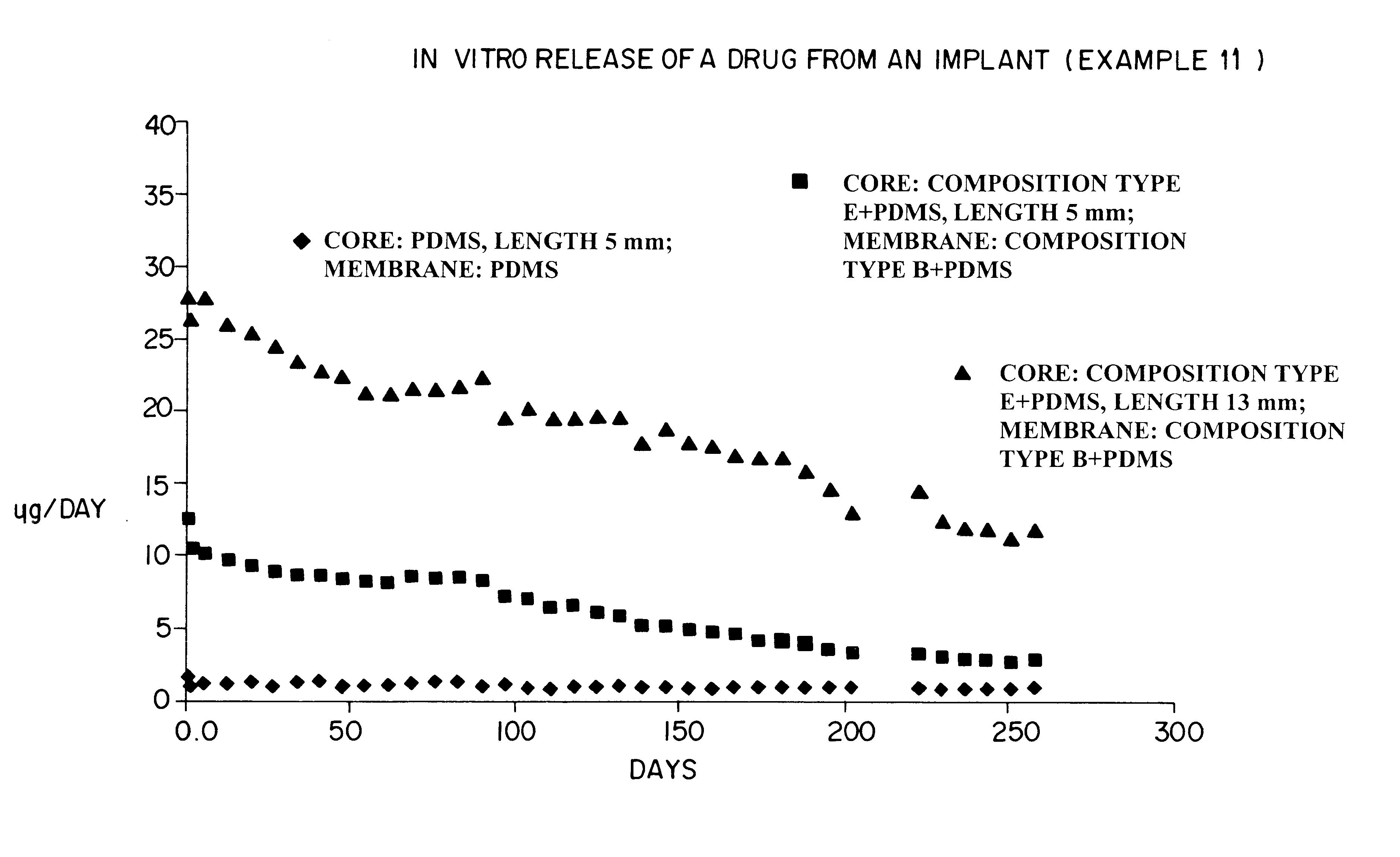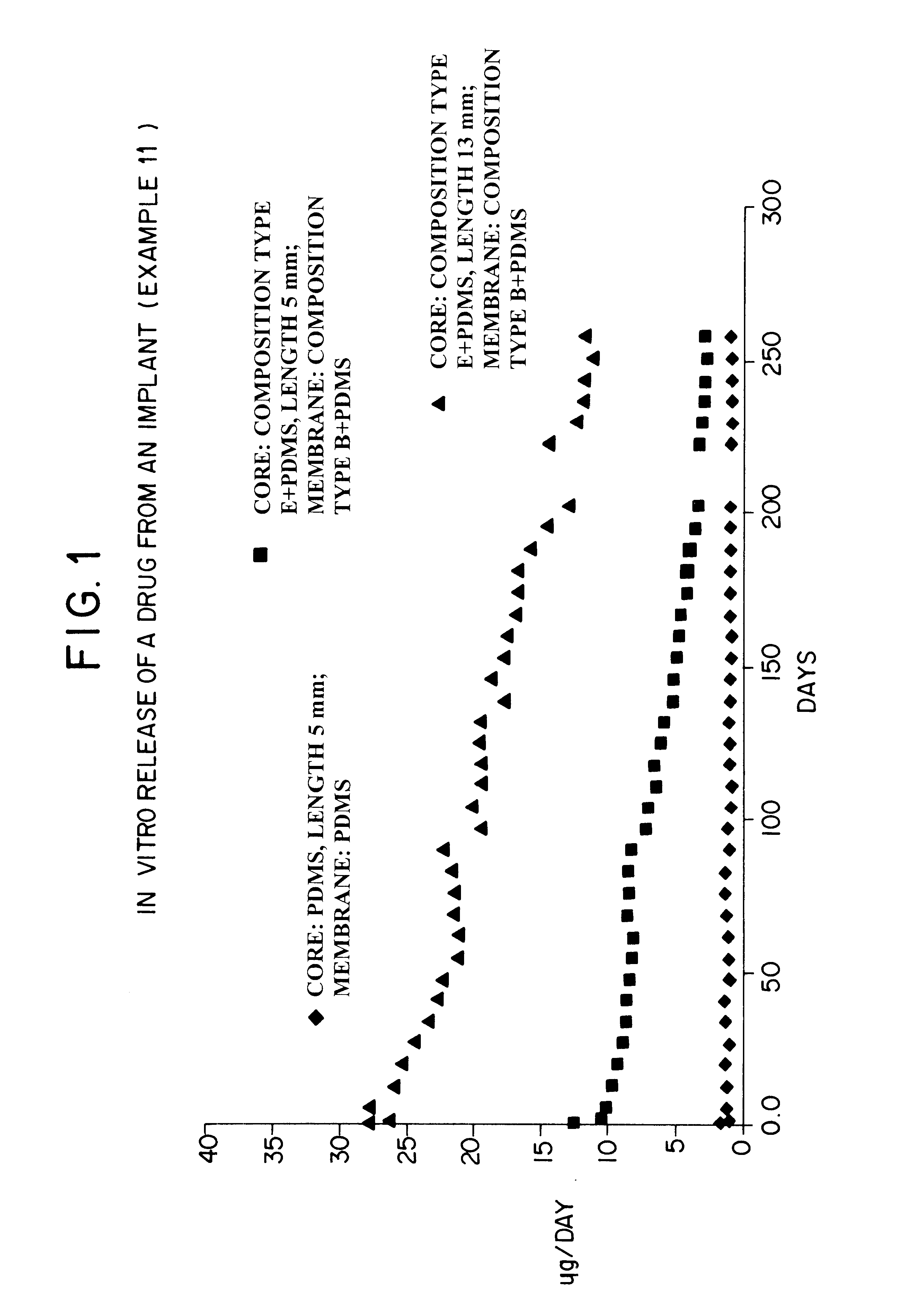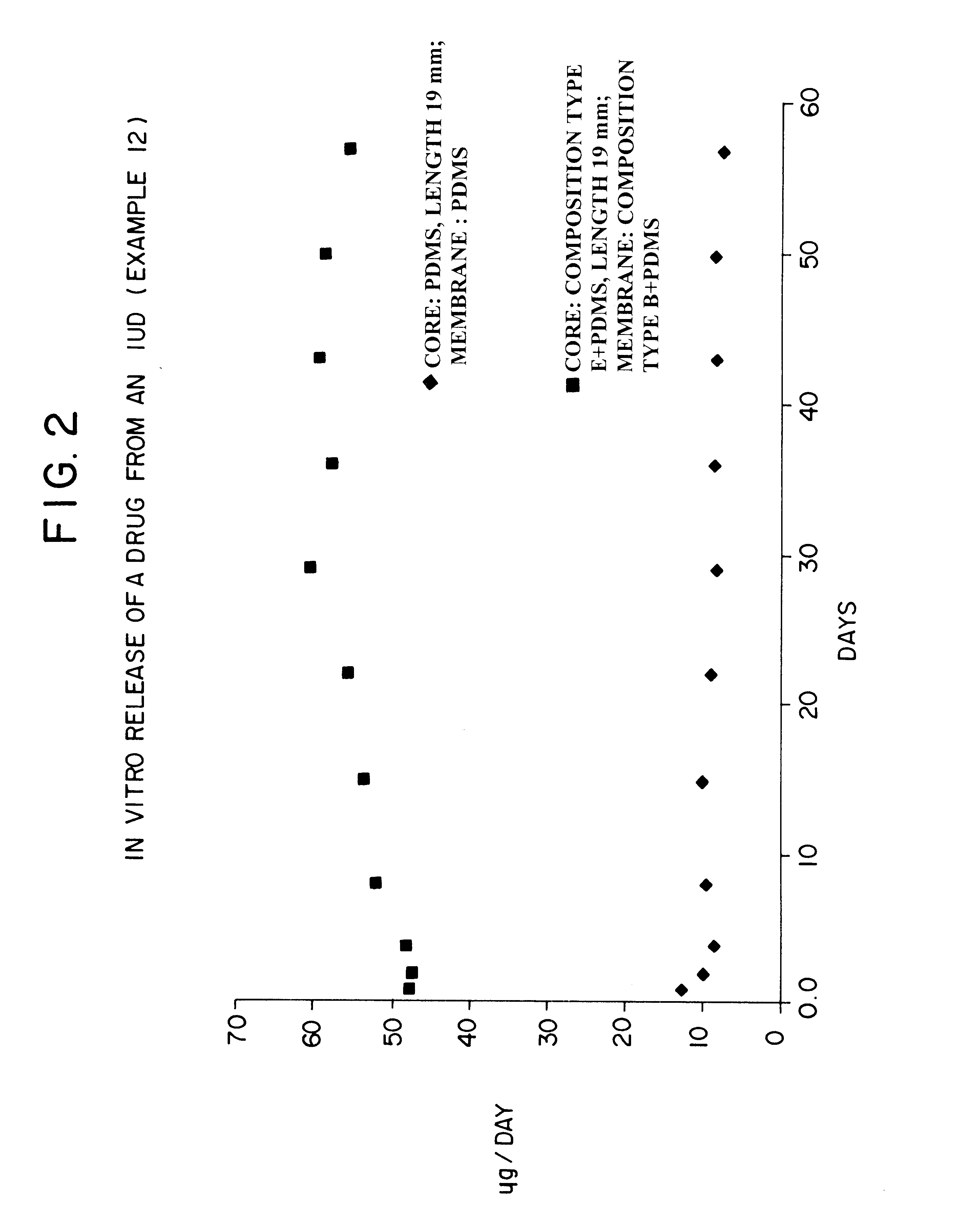Devices for the delivery of drugs having antiprogestinic properties
a technology of drugs and devices, applied in the direction of contraceptive devices, drugs, prosthesis, etc., can solve the problems of inconvenient wear, stiffness and non-flexibility of devices manufactured from eva, and inconvenient wear
- Summary
- Abstract
- Description
- Claims
- Application Information
AI Technical Summary
Benefits of technology
Problems solved by technology
Method used
Image
Examples
example 1
Elastomer Membrane Prepared from Composition Type A
Ingredients used for the preparation of the elastomer membrane:
.alpha.,.omega.-divinyl ether PEO-PDMS block copolymer where the amount of PEO was 27.0% by weight and the vinyl content was 0.186 mmol / g.
Platinum catalyst Silopren U Katalysatoren Pt-D (Bayer AG), which had a platinum-siloxane complex in a vinyl-containing siloxane matrix. The platinum content was 1% by weight and the vinyl content was 0.5 mmol / g.
Crosslinking agent .alpha.,.omega.-di(trimethyl silyl) dimethyl siloxane-hydromethyl siloxane (DMS-HMS) copolymer Silopren U Vernetzer 730 (Bayer AG) having a Si--H content of 7.1 mmol / g, a molar mass of 2800 g / mol and a DMS group to HMS group ratio of 1:1.
Inhibitor 1-ethynyl-1-cyclohexanol (ETCH, Aldrich) having a decomposition temperature of +40.degree. C.
The PEO(-PDMS-PEO).sub.n which was used as the initial substance was prepared as follows:
50 g of anhydrous .alpha.,.omega.-divinyl ether poly(ethylene oxide) (PEODIVI) havin...
example 2
Elastomer Membrane Prepared from Composition Type B
Ingredients used for the preparation of the elastomer membrane:
The PEO(-PDMS-PEO).sub.n was the same as in Example 1, except that the amount of PEO had been increased to 28.0% by weight and the vinyl content to 0.24 mmol / g by increasing the proportion of PEODIVI in the synthesis of the block copolymer.
The catalyst, the crosslinking agent and the inhibitor were the same as in Example 1.
The siloxane polymer which contained filler was a dimethyl siloxane-vinyl methyl siloxane (DMS-VMS) copolymer containing a silica filler and having a molar mass of M.sub.n =400,000 g / mol. The vinyl content of the blend was 0.011 mmol / g. There was 36% by weight of silica mixed in the polymer, and the silica was surface-treated with .alpha.,.omega.-bis(dimethyl hydroxysilyl) poly(dimethyl siloxane) (M=520 g / mol), which was present in an amount of 12% by weight in the blend.
The amounts of ingredients in the composition example were as follows:
PEO(-PDMS-PE...
example 3
Elastomer Membrane Prepared from Composition Type C
Ingredients used for the preparation of the elastomer membrane:
The PEO(-PDMS-PEO).sub.n was the same as in Example 2. The catalyst and the inhibitor were the same as in Examples 1 and 2.
The dimethyl siloxane-vinyl methyl siloxane (DMS-VMS) copolymer containing a silica filler was the same as in Example 2.
The crosslinking agent used was a PDMS-(-PEO-PDMS).sub.n copolymer having a Si--H content of 0.26 mmol / g, and the amount of PEO in it was 23.6% by weight.
The said crosslinking agent was prepared as follows:
40 g of an anhydrous .alpha.,.omega.-divinyl ether poly(ethylene oxide) (PEODIVI) having a molar mass of 246.3 g / mol was weighed into a three-necked flask. In addition, 129.4 g of .alpha.,.omega.-bis(dimethyl silyl hydride) poly(dimethyl siloxane) PDMSDIH, M.sub.n =717 g / mol) and 30% by weight of toluene dried by distillation were weighed into the same vessel. Since dimethyl silyl hydride groups were present in excess (10 mol-%) i...
PUM
| Property | Measurement | Unit |
|---|---|---|
| molar mass | aaaaa | aaaaa |
| decomposition temperature | aaaaa | aaaaa |
| molar mass | aaaaa | aaaaa |
Abstract
Description
Claims
Application Information
 Login to View More
Login to View More - R&D
- Intellectual Property
- Life Sciences
- Materials
- Tech Scout
- Unparalleled Data Quality
- Higher Quality Content
- 60% Fewer Hallucinations
Browse by: Latest US Patents, China's latest patents, Technical Efficacy Thesaurus, Application Domain, Technology Topic, Popular Technical Reports.
© 2025 PatSnap. All rights reserved.Legal|Privacy policy|Modern Slavery Act Transparency Statement|Sitemap|About US| Contact US: help@patsnap.com



